
Indonesia regularly tops polls of best places in the world to scuba dive – here are ten of the best dive spots (and there are many more!) of Indonesia’s vast archipelago of more than 17,500 islands

Indonesia’s top dive spots (clockwise from north-west)
- Pulau Weh – Sumatra
- Derawan/Sangalaki – East Kalimantan
- Bunaken Marine Park – North Sulawesi
- Lembeh – North Sulawesi
- Raja Ampat – West Papua
- Ambon – Maluku
- Wakatobi – Southeast Sulawesi
- Alor – Lesser Sunda Islands
- Komodo National Park – Flores
- Nusa Islands (Lembongan/Ceningan/Penida) – Bali
(1) Pulau Weh – Sumatra

The small volcanic island of Pulau Weh is located at the northernmost point of the Indonesian archipelago, at the tip of the vast island of Sumatra where the Indian Ocean meets the Pacific.
Pulau Weh has a wonderful range of diving, from small critter diving to larger pelagics. It’s not as well travelled as other parts of Indonesia and while the infrastructure is not as developed as it might be in Bali, Pulau Weh retains a wild, untouched vibe – and you’ll meet far fewer divers than most other dive spots!
Diving is year-round with temperatures averaging around 28-29°C and excellent visibility. It’s mostly dry from February to November but the rainy season in between is the best time for spotting mantas
(2) Derawan/Sangalaki – East Kalimantan
Sangalaki is one of the Derawam Islands, located just off the coast of Borneo, and one the best places in the world to dive and snorkel with manta rays. Daily encounters are almost guaranteed, especially around the full moon when you can fidn yourself surrounded by 20 or more mantas as they feed and make use of cleaning stations.
Derawan itself is nicknamed ‘Turtle Island’, for the hundreds of turtles that can be found there, although there are plenty of other critters and a good chance of spotting the deadly (but very pretty) blue-ringed octopus. If you’re staying on the island itself you might be lucky enough to see the turtles mating.
It’s also worth checking out the freshwater jellyfish lakes for another unique immersive experience.
Diving is year-round although visibility can deteriorate during the November to March rainy season which makes spotting even the biggest fish a bit tricky.
(3) Bunaken Marine Park – North Sulawesi
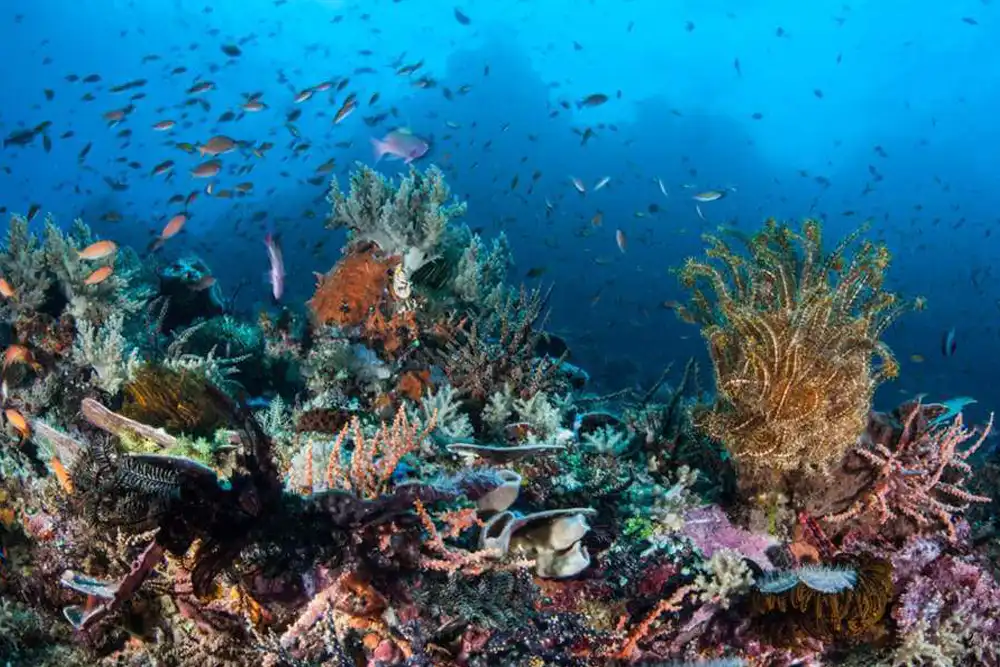
The islands of Bunaken and Siladen are located off the city of Manado on the northern tip of Sulawesi. They are surrounded by high-energy walls and rolling coral gardens which have some of the most exhilarating drift dives through forests of soft and hard coral and crowds of reef fish.
Turtles abound and sharks, eagle rays and other pelagic predators all revel in this protected zone. You can stay in the resorts surrounding Manado and enjoy a 45-minute commute out to the reefs, but far better is to stay in the small but wonderful eco-resorts on either Pulau Silanen or Bunaken.
- Check out: Siladen Resort & Spa
(4) Lembeh – North Sulawesi
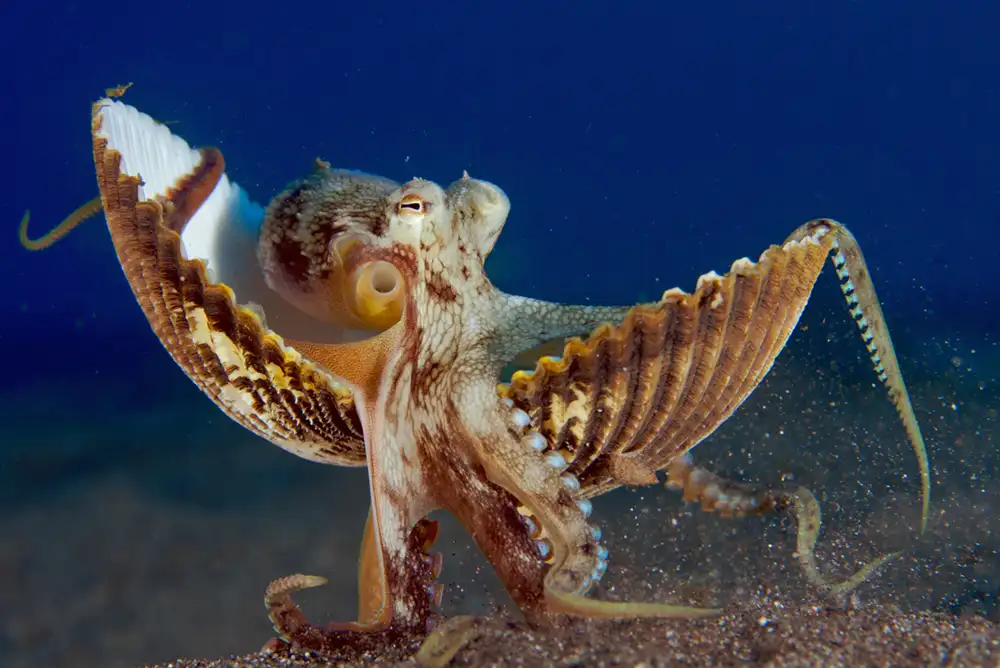
Two hours’ drive and a short boat ride from the North Sulawesi capital Manado is the island of Lembeh, and the associated straits between the island and the mainland are renowned for their amazing muck diving.
A large percentage of the critters you will find there are unique to the region and it’s entirely possible you may not realise that some of them are actually living creatures until your guide points them out!
Most of the dive sites are only a short boat ride from whichever of the secluded resorts you choose to stay in, and slack currents, shallow water and the colourful sea life contrasted against the black sand make Lembeh a macro photographer’s paradise.
Diving is year-round, but peak time for critters is probably July and August.
(5) Raja Ampat – West Papua
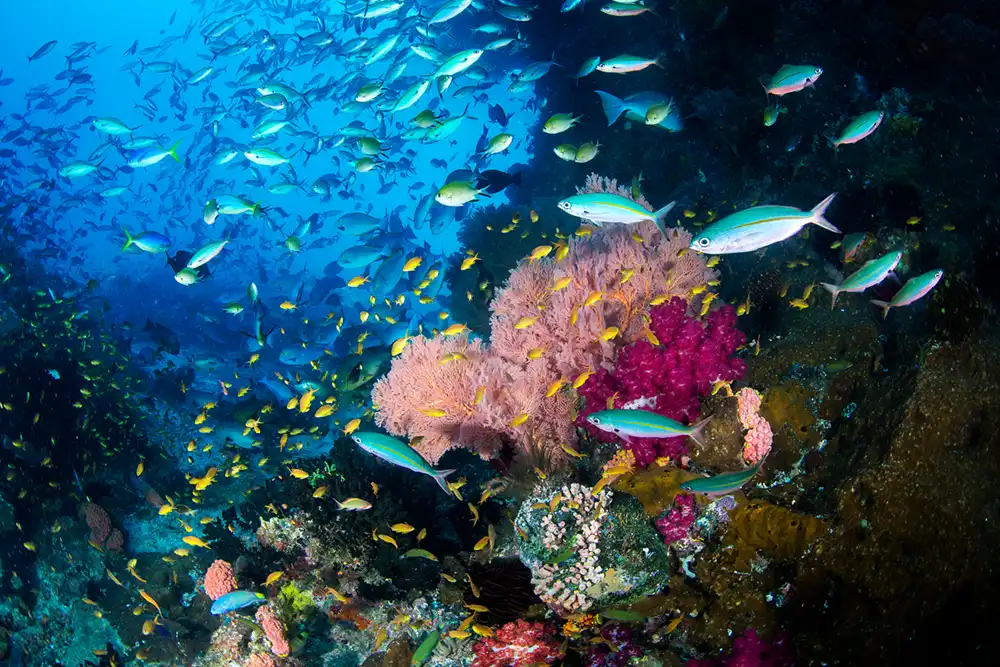
Raja Ampat – ‘the four kings’ – is an archipelago of more than 1,500 small islands of which Misool, Salawati, Batanta and Waigeo are the largest, and one of – if not the – most biodiverse marine habitats in the world with
More than 1,500 species of fish and 550 types of coral – around 75 per cent of all known species – are found in its waters, among which divers can encounter everything from sharks and mantas to dugongs and leatherback turtles to the minuscule pygmy seahorse.
Raja Ampat has to be top of the list for diving in Indonesia and, for most who’ve visited, the best scuba diving in the world.
(6) Ambon – Maluku

Ambon Bay has, in recent years, become one of the world’s top muck diving destinations with underwater photographers able to tick off blue-ringed octopus, wonderpus, flamboyant cuttlefish, rhinopias and mating mandarin fish from their black-sand bingo cards. It’s not quite up to the same standard as Lembeh, but it is a lot easier to get to.
For those who prefer some deeper water and a bit of current there are some decent reefs and walls along Ambon’s southern coast, and the excellent wreck of the Duke of Sparta, a 100m-long freighter sunk in 1958 and only rediscovered by divers in 2009 is just a short ride away.
Ambon is best dived during the dry season from October and April, with the best time probably September to December. Rainy season is May to August – the reverse of most of the rest of Indonesia – and weather conditions during this time can make diving difficult with very poor visibility. You may find that some resorts will close completely during July.
(7) Wakatobi – Southeast Sulawesi

Wakatobi is a purpose-built eco-resort in the heart of the Tukangbesi archipelago off the southern tip of Southeast Sulawesi. It opened in 1995 with the specific aim of restoring reefs that had been damaged through dynamite fishing and other dubious practices and the resulting reefs are some of the healthiest on the planet.
The island is reached through a private light aircraft and airstrip and you will explore some of the most pristine reefs in Indonesia without seeing a single soul outside of your own dive team.
The house reef is a world-class dive in its own right and there are plenty of stunning sites to explore, creating an underwater photographer’s paradise in year-round warm waters with outstanding visibility.
Those looking for adventures further afield can make it a ‘two-for-one’ trip split between the resort and Wakatobi’s luxury liveaboard, Pelagian.
- Check out: Wakatobi’s ‘double dip’ diving experience
(8) Alor – Lesser Sunda Islands
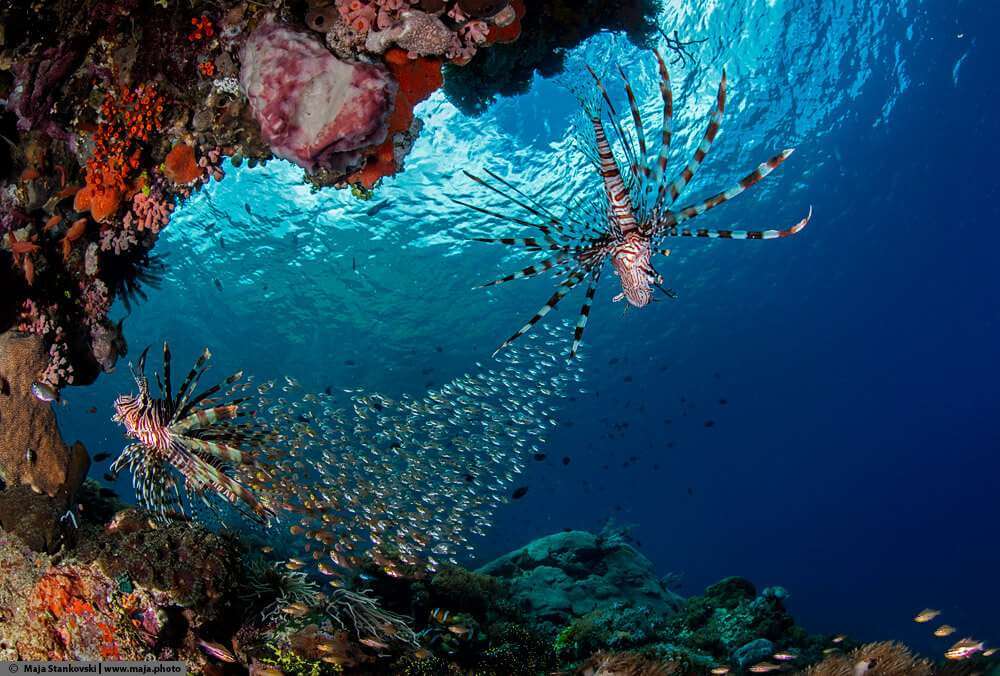
The island of Alor is towards the remote eastern end of the Indonesian islands. Best dived from a liveaboard for that reason, the location remains mostly unspoilt by human activity and offers a wide diversity of wildlife and diving.
Schools of hammerheads are frequently sighted, as are pilot whales and dolphins. Currents on the reef can be strong so some experience is required, but there are sheltered spots which, due to the volcanic nature of the island and the resulting black sandy sea bottom, make Alor an excellent place for both muck-diving with macro lenses and wide-angle shots of the bigger stuff.
Diving is year-round but the best is from September to November when the currents are at their strongest. Take a reef hook.
(9) Komodo National Park – Flores
Komodo National Park, designated a World Heritage Site in 1991 by UNESCO, is most famous for the Komodo Dragon, the world’s largest lizard and endemic resident of the island – but the marine diversity, like most of Indonesia, is also spectacular.
The park includes the lesser-known Padar and Rinca and 26 smaller islands, affording divers the opportunity to explore a range of different marine environments.
The northern regions of the park, filled with bright coral and cruising reef sharks, are generally warmer and clearer than the south, where cold upwellings drive nutrients towards the surface leading to a decrease in visibility but an increase in mantas!
(10) Nusa Islands (Lembongan/Ceningan/Penida) – Bali
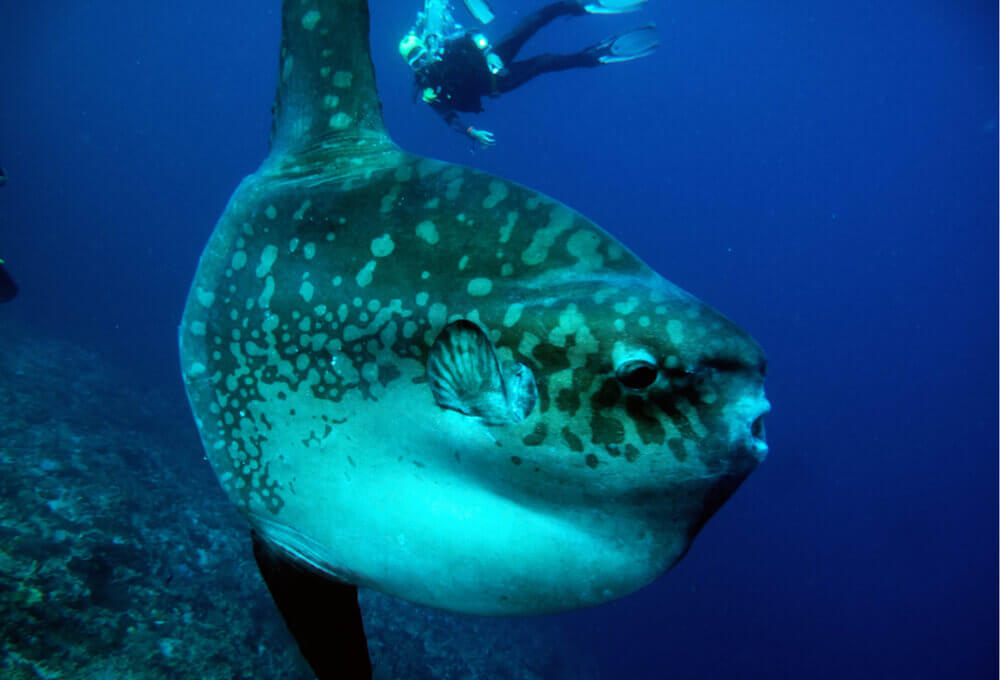
Nusa Lembongan, Nusa Ceningnan and Nusa Lembongan are three islands approximately 30 minutes by speedboat from Sanur harbour in southern Bali. They are often referred to as the Nusa Islands, although ‘Nusa’ is actually the Bahasa word for ‘Island’.
For many years, Lembongan was the centre of activity with most of the diving taking place around Nusa Penida, the largest of the three. Penida opened to tourism in 2015 and has developed rapidly, especially around the main harbour, but there are still plenty of places around the island to escape and chill.
The islands are go-to places for sightings of southern mola, (Mola alexandrini), particularly at the famous (but often very busy) Crystal Bay, and the resident population of reef manta at feeding and cleaning stations along the southern coastline, where sightings are almost (but not quite) guaranteed.
Penida’s north shore is one long, unbroken and spectacular coral reef, but currents around the islands can be very strong and some dive sites are for experienced divers only. Diving is year-round but be warned – the water temperature is much cooler than other locations in Indonesia, dropping below 20° at times, so 5mm full-length suits are essential.


